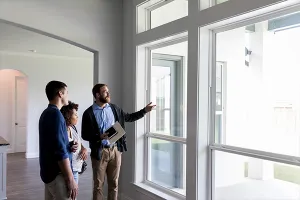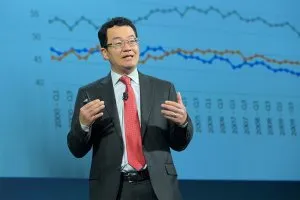
If they decide to sell their home, baby boomers—those born between 1946 and 1964 and estimated to number about 76 million—might not want to reinvest their equity in another property. Many favor renting, according to Freddie Mac. Among the reasons:
- Greater affordability and better control over monthly expenses through a lease instead of mortgage, property taxes, homeowners insurance and maintenance
- Readily available services from on-site management, such as package delivery or plant watering, as seen in communities by Optima, Inc.
- More freedom to lock up and travel
- Greater opportunity to invest capital in non-real estate assets
- Flexibility to move if desired
- Preference to own only one property, typically a vacation or primary home
- Proximity to children and grandchildren
“The younger generation’s location may be based on the strongest job growth,” says Chris Nebenzahl, vice president of rental research at John Burns Real Estate Consulting.
Some don’t consider renting until it’s suggested, says Jean-Marie Minton, SRES®, with Keller Williams Realty Evolution. “I do it as part of due diligence to discuss options so they make the smartest decision,” she says. Her parents relocated in their mid-70s to a 55-and-up rental community and sold their longtime family home. Now 93, her mother still lives there, surrounded by others but remaining independent.
It’s important to understand such preferences. Because of their accumulated possessions and desire to house family and friends, many don’t want to follow the pattern of past generations and downsize when they transition homes. Some seek equal or more space, which various rental communities will offer.
Boomers also prefer different amenities than millennials and Gen Z. They may favor walking trails and dog parks over plunge pools and climbing walls. Earning the Seniors Real Estate Specialist® (SRES®) designation can give professionals an edge in meeting boomer needs. While rental supply has recently boomed, long-term undersupply could become a challenge, Nebenzahl adds.
Boomers span an 18-year age range, so no rental unit suits all preferences. Several prototypes offer both pros and cons.
Traditional Apartments with Amenities
This rental model typically features newer units in a multistory building with elevators and amenities. For a lower-cost option, the property may be comprised of older, low-rise, garden-style buildings.
Pros
- Location: New buildings are often walkable to restaurants, shops, transit, and sometimes universities. For example, RMK Management Corp.’s Central Station in downtown Evanston, Ill., is near public transit and Northwestern University. Safety features such as buzzers or concierges add appeal, says architect Anthony Vivirito, LEED AP, associate at The Architectural Team (TAT). Proximity to healthcare facilities is another plus, says Desen Lin, assistant professor of finance at Cal State Fullerton.
- Layout and Design: Many units are single-level and feature open floor plans with quality finishes, says Diana Pittro, executive vice president at RMK Management Corp.
- Amenities: Fitness studios, wellness programming, pools, dog parks and community spaces offer convenience. At Optima Verdana in Wilmette, Ill., the pool has retractable glass walls for year-round use. The Residences of Wilmette offer terraces with kitchens and fire pits. Anthem Everett in Everett, Mass., designed by TAT, includes community-focused retail and public space enhancements. Optima’s in-house concierge provides services like grocery delivery and housekeeping.
- Move-in Ready: Having a turnkey unit saves time and renovation costs, says Kerry O’Brien, broker and owner of O’Brien Realty.
Cons
- Rent: High operational costs drive up rent. Some amenities may not appeal to boomers.
- Noise: Younger residents may make communal areas busier than boomers prefer.
- Square Footage: Many units are studios or one- to two-bedrooms, which may not suit boomers who want room for family. Older buildings may lack ADA-compliant features.
Build-to-Rent (BTR) Homes
Emerging after the Great Recession, this model appeals to those who want the feel of a single-family home without owning. Though originally popular with millennials and Gen Z, BTR homes also attract boomers.
Pros
- Space: These homes often have multiple bedrooms, yards and second stories, but no ownership costs.
- Camaraderie: Clubhouses and shared spaces foster community among residents of all ages.
- Appeal Across Ages: Developers like Capstone Communities, which began with student housing, found the model also works for boomers, says Executive Vice President John Acken.
Cons
- Location: Often in suburban areas, these communities may feel isolating. Capstone aims to incorporate walkability into its designs.
- Too Much Space: Large homes may not appeal to all boomers.
- Younger Neighbors: A youthful resident mix might not suit everyone.
Active Adult Living
Originally introduced by Del Webb in the 1960s with Sun City, Ariz., these age-restricted communities offer homes and extensive programming for retirees. Today, they serve a broader 55+ population, though the average age trends between 72 and 75, says Rockland Berg, AIA, principal at three architecture.
Pros
- Age-Appropriate Design: Communities like Everleigh Cape Cod near Hyannis, Mass., feature lounges, yoga studios, libraries and arts rooms. Accessibility helps residents age in place, says Vivirito.
- Programming: These communities offer pickleball, walking trails, health lectures and more. At Vita Luxury Apartments on Grant in Merrillville, Ind., RMK staff host speaker events and vaccine clinics. “Aging well is best when done with purpose,” Berg says.
Cons
- Location: Often located in the “smile states,” they may be far from family.
- Limited Age Diversity: Some may prefer a more age-diverse environment.
- No Health Care: Unlike continuing care retirement communities, active-adult communities don’t offer advanced care, requiring additional planning if needs change. “It’s often done in a crisis,” Berg says.
Whatever option boomers choose, remind them it doesn’t have to be permanent. Some may return to homeownership because renting is often a transitional phase, Pittro says. “Very seldom do these renters stay in excess of five to seven years,” she says.









